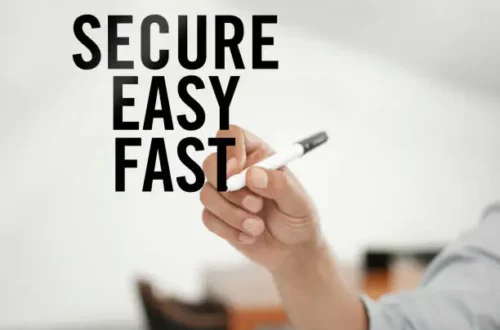What is Gratitude?
The True Meaning of Gratitude
Gratitude isn’t just a polite “thank you” or a casual acknowledgment. It’s a deep appreciation for the good in your life, big or small. It’s about recognizing value, kindness, and the moments that make life meaningful. It’s more than just words—it’s a feeling and a mindset that transforms how we experience the world.
Why Gratitude Matters
Why should you care about practicing gratitude? Because it has the power to change your perspective. When you focus on what you’re thankful for, your brain rewires itself to notice more positive things. This shift can improve your mood, reduce stress, and make daily challenges easier to handle.
Benefits of Practicing Daily Gratitude
Mental Health Benefits
Practicing gratitude has been linked to lower levels of depression and anxiety. Psychologists like Robert Emmons highlight how gratitude strengthens emotional resilience. When you regularly acknowledge the good, your brain releases feel-good chemicals like serotonin and dopamine, which boost your mood naturally.
Physical Health Benefits
Gratitude can even improve your physical health! Studies show that people who practice gratitude tend to have better sleep, lower blood pressure, and a stronger immune system. It’s like giving your body a gentle health boost just by shifting your mindset.
Common Misconceptions About Gratitude
It’s Not Just Saying “Thank You”
People often mistake gratitude for just being polite or saying “thanks” after receiving something. True gratitude is intentional and reflective, not automatic or superficial. It means pausing to genuinely feel thankful, not just brushing over kindness.
Gratitude vs. Toxic Positivity
Gratitude isn’t about ignoring pain or pretending everything is perfect. That’s toxic positivity. Instead, it’s about acknowledging both the good and the bad but choosing to focus on what uplifts you. It’s a balanced view that fosters growth, not denial.
How to Start a Gratitude Practice
Setting Realistic Expectations
Don’t expect to become a gratitude guru overnight. Start small. Even jotting down one thing you’re thankful for each day is a huge step. The goal is progress, not perfection.
Choosing Your Method
Some people love journaling, while others prefer quiet meditation or verbal expressions. Find what feels natural for you. This makes it easier to stick with your practice long-term.
Different Ways to Practice Gratitude
Journaling Gratitude
Keep a gratitude journal. Write down three things you’re thankful for every day. It’s a powerful way to train your brain to spot positivity, especially on tough days.
Gratitude Meditation
Try a guided gratitude meditation. Focus on breathing and think deeply about the people, moments, or things that bring joy to your life. This practice helps you connect emotionally with gratitude.
Making Gratitude Part of Your Routine
Morning Gratitude Rituals
Start your day by thinking about what you’re grateful for before you even get out of bed. This sets a positive tone for your entire day and frames your mindset toward appreciation.
Evening Reflection
Before sleeping, reflect on the day’s positive moments. This can improve your sleep quality and help you end the day with a peaceful mind.
How to Deepen Your Gratitude Practice
Going Beyond Surface Gratitude
Instead of just listing “I’m grateful for my family,” think about why. What specific things did they do or say that touched your heart? This adds emotional depth to your practice.
Gratitude for Challenges
Here’s a twist: try being grateful for difficulties. They teach resilience, strength, and patience. This mindset makes you stronger and more adaptable.
Using Technology to Support Gratitude
Apps and Tools
Apps like Gratitude Journal, Happify, or Reflectly provide daily prompts and reminders to keep your gratitude habit alive. They’re handy for busy people who need a nudge.
Social Media and Gratitude
Share your gratitude on social media or in private groups. This can inspire others and create a community of positive vibes around you.
Gratitude in Relationships
Expressing Thanks to Others
Don’t keep your gratitude bottled up. Tell your friends, family, or coworkers why you appreciate them. It strengthens bonds and spreads joy.
Building Stronger Bonds
Gratitude helps resolve conflicts by focusing on positive aspects of relationships, making forgiveness and understanding easier.
Overcoming Challenges in Practicing Gratitude
When It Feels Forced
If gratitude feels fake, slow down. Focus on small, genuine things. Authenticity beats quantity.
Staying Consistent
Set reminders or pair gratitude practice with another daily habit like brushing teeth or morning coffee to make it stick.
Scientific Research Supporting Gratitude
Studies on Happiness and Gratitude
Researchers like Martin Seligman show that gratitude exercises increase happiness scores significantly, proving this isn’t just feel-good fluff.
Neuroscience Insights
Gratitude activates brain regions tied to dopamine production, which is why it feels rewarding and can become addictive—in a good way!
Famous Quotes on Gratitude
Words from Oprah Winfrey
Oprah says, “Be thankful for what you have; you’ll end up having more.” Her life and career exemplify gratitude’s transformative power.
Insights from Brené Brown
Brené Brown highlights how gratitude is tied to vulnerability and wholehearted living, reinforcing its deep emotional roots.
How Gratitude Impacts Your Life Long-Term
Lasting Changes
Daily gratitude can rewire your brain permanently, creating a lasting positive outlook that endures beyond the practice itself.
Creating a Positive Mindset
Gratitude shifts your mindset from scarcity to abundance, helping you feel richer emotionally, no matter your bank balance.
Tips for Sustaining Gratitude Practice
Accountability Partners
Team up with a friend for daily gratitude check-ins. It makes the habit more fun and helps keep you honest.
Mixing Up Your Practice
Change your gratitude methods regularly—try writing letters, making gratitude art, or verbal affirmations to keep things fresh.
Conclusion
Gratitude isn’t just a feel-good habit; it’s a life changer. By committing to daily gratitude with intention, you unlock mental, emotional, and physical benefits that ripple through your entire life. Remember, it’s not about grand gestures but consistent, heartfelt appreciation. So, why not start today? Your future self will thank you.
FAQs
Q1: How long does it take to feel the benefits of practicing gratitude?
Most people notice mood improvements within a few weeks of daily practice, but some benefits, like improved sleep, can appear sooner.
Q2: Can gratitude help with anxiety and depression?
Yes! Studies show gratitude exercises can reduce symptoms by shifting focus from worries to positive aspects of life.
Q3: What if I have trouble finding things to be grateful for?
Start very small—like a warm cup of coffee or a moment of sunshine. Over time, your awareness will grow.
Q4: Is it better to write or say gratitude aloud?
Both work well; choose what feels more natural. Writing often helps deepen reflection, while saying it aloud can strengthen social bonds.
Q5: Can children practice gratitude?
Absolutely! Teaching kids gratitude early fosters emotional intelligence and resilience throughout their lives.





